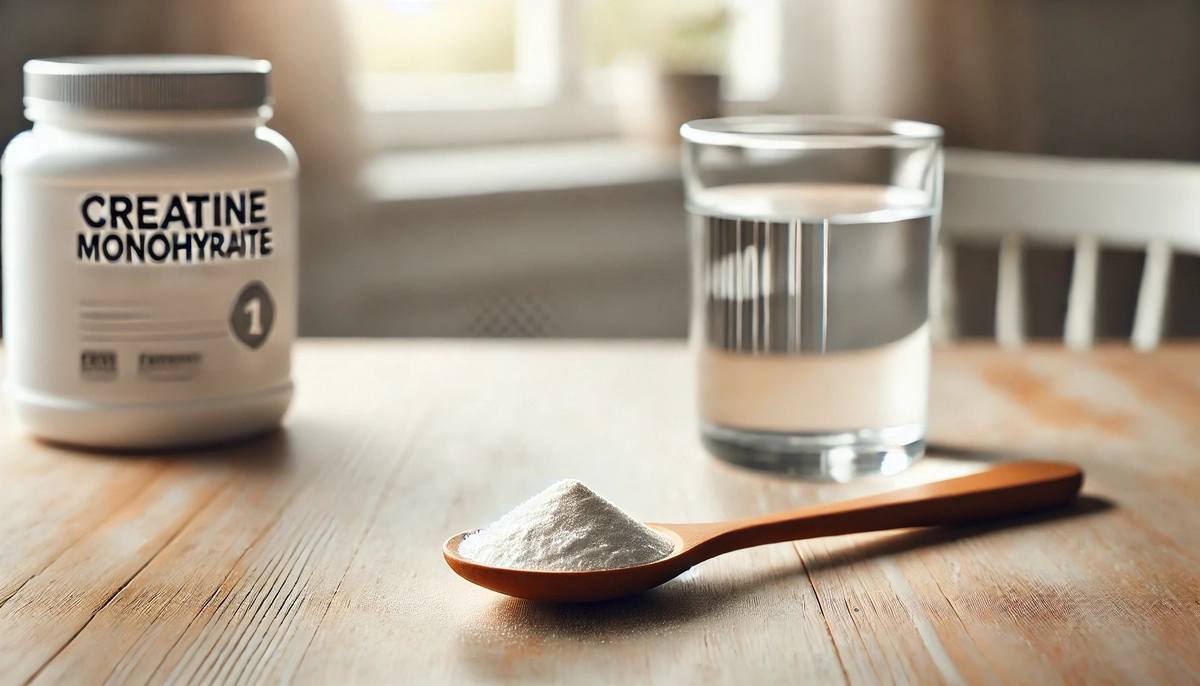Let’s cut to it: 1 gram of creatine per day doesn’t make a noticeable difference for most people focused on building muscle, increasing strength, or improving performance.
As someone who’s been lifting for over a decade and coaching full-time, I’ve run the experiment myself. I dropped my usual 8g/day dose to just 1g/day for a full month. By the second week, I felt it in every set—less strength, slower recovery, weaker pumps.
“By the end of that month, I honestly questioned whether I was even supplementing anymore. That’s how subtle 1 gram felt for me—and I’m not new to the game.”
Table of contents
- What Does Creatine Actually Do?
- 1g vs. Effective Dosages: Why It Matters
- Client Story: When 1 Gram Did Nothing
- When 1 Gram Might Make Sense
- Coach’s Real-World Dosing Guide
- Most Common Creatine Mistakes I See
- When & How to Take Creatine: Real-Life Tips
- Final Verdict: 1 Gram Creatine—Safe, But Weak for Results
- More Gym Floor Moments…
- What’s Your Take?
- Trusted Resources on Creatine Dosage and Effectiveness
What Does Creatine Actually Do?
Creatine supports ATP production—your body’s quickest form of fuel during intense efforts. According to the International Society of Sports Nutrition (ISSN), it helps:
- Improve muscular strength
- Enhance high-intensity performance
- Boost muscle hydration and volume
- Support faster recovery
But for those benefits to kick in, your muscles need to be fully saturated. And 1 gram simply won’t get you there.
“Creatine is like a fuel tank. If you’re not filling it enough, the engine won’t perform—no matter how hard you press the gas.”
1g vs. Effective Dosages: Why It Matters
Here’s the usual approach:
- Loading phase (optional): ~20g/day for 5–7 days
- Maintenance phase: 3–5g/day
Compare that to 1g/day, and you’re not even scratching the surface.
“A client once joked that 1 gram of creatine is like brushing your teeth with just water. Technically you’re doing something, but you’re not really cleaning anything.”
“I saw real gains on 8g/day—fuller muscles, more reps, faster bounce-back. Dropping to 1g/day? It was like training in airplane mode.”
Client Story: When 1 Gram Did Nothing
One of my clients followed a meat-heavy diet—steak nearly every day, high protein, high iron. He wanted to try creatine, but I warned him he was probably already saturated naturally.
Still, we gave it a shot: 1g/day, post-workout.
“Two weeks later, he said: ‘Coach, I swear I feel no change at all.’ And that confirmed it—his body didn’t need the extra push.”
We dropped the supplement. His performance stayed solid. Sometimes, doing less is doing smart.
When 1 Gram Might Make Sense
1 gram per day could be reasonable in certain situations:
- You eat a high-creatine diet (lots of red meat/fish)
- You’re using creatine for brain or long-term health, not gym goals
- You have a very small frame or low muscle mass
- You want to ease into supplementation slowly
“One beginner I worked with had sensitive digestion. We started him on 1g/day to test tolerance. After a week with no issues, we gradually worked up to 5g/day—and that’s when the magic started happening.”
Coach’s Real-World Dosing Guide
From training dozens of clients in different age groups and body types:
- Men: 5–10g/day
- Women: 3–5g/day
- Beginners: Start low, build up
- Goal: Muscle saturation for performance & recovery
I treat creatine like I treat training—tailored to the individual. There’s no one-size-fits-all approach in fitness, and supplements are no different.
Most Common Creatine Mistakes I See
These are real mistakes I’ve seen in the gym or in DMs:
- Using creatine to cover up poor training or lazy nutrition
- Skipping it on rest days
- Overdosing in hopes of faster results
- Ignoring water intake (big one!)
- Taking it inconsistently or without purpose
- Not testing kidney health before starting
“One guy was dry-scooping 10g of creatine thinking it’d give him a pump. I had to pull him aside and explain it doesn’t work like pre-workout—it’s about saturation, not sensation.”
Some users report unexpected weight loss while using creatine, often due to water shifts or changes in diet and training. It’s not always a bad sign. Discover the causes and solutions.
When & How to Take Creatine: Real-Life Tips
Here’s what I personally do, and what I recommend to clients:
- Training Days: Take it before or after workouts
- Rest Days: After breakfast
- Hydration: Minimum 3 liters of water per day
- Stacking: Combine with carbs (like juice) to enhance uptake
Personally, I take it with my post-workout shake—protein + banana + creatine. Tastes good, digests clean, and supports muscle recovery.
Taking creatine on an empty stomach in the morning may help with faster absorption, especially in fasted states or early workouts. It’s a simple strategy for those using small doses like 1 gram. Learn more about morning creatine timing.
To boost performance, it’s useful to know the best time to take BCAA and creatine together — often around workouts. Timing can influence results. Find the optimal timing here.
Final Verdict: 1 Gram Creatine—Safe, But Weak for Results
If you’re an athlete, bodybuilder, or serious lifter, 1 gram of creatine per day isn’t enough to fuel your gains. It’s just not a high-enough dose to help saturate your muscles.
But if your diet already includes a lot of red meat, or you’re taking creatine for general wellness? It might be fine.
One gram a day won’t hurt—but don’t expect to feel it either. If you want results, you’ve got to fuel like you mean it.
Stick with 3–5g/day, every day, and you’ll start seeing the real difference.
More Gym Floor Moments…
After three weeks on 5g/day, one client came back saying, ‘I don’t know if it’s placebo, but I’m crushing sets I used to struggle with.’ That’s creatine kicking in.
Had a client who kept forgetting to take it on rest days. Once he fixed that and stayed consistent, his performance leveled up.
One of my long-time clients just turned 50. He takes 3g daily—not for lifting, but for brain health. Sometimes we forget creatine isn’t just for muscle.
🧾 Disclaimer: This article reflects personal experiences and the latest available research. Always consult a qualified healthcare provider before starting any supplement, especially if you have pre-existing health conditions.
What’s Your Take?
Have you tried low-dose creatine like 1 gram per day? Did it work for you, or did you feel no difference?
Share your story in the comments—your experience might help someone else make a smarter choice.
Trusted Resources on Creatine Dosage and Effectiveness
For readers interested in the science behind creatine use and whether low doses like 1 gram can make an impact, here are some expert-backed resources worth exploring:
- Comprehensive review on creatine supplementation and muscle growth
This scoping review analyzes multiple clinical trials to determine how creatine supplementation—at various dosages—affects muscle development and strength. - Individualized creatine dosing strategies
This research paper explores how a one-size-fits-all approach may not be optimal, recommending more personalized creatine doses based on body weight. - Insights from 25 years of creatine research
A summary of over two decades of creatine studies, covering safety, effectiveness, and how smaller doses contribute to muscle saturation over time.



Leave a Reply